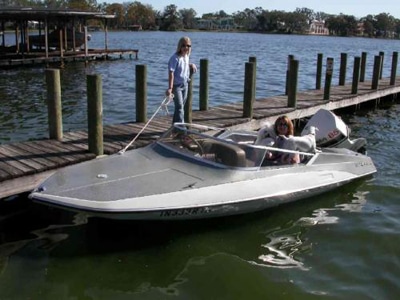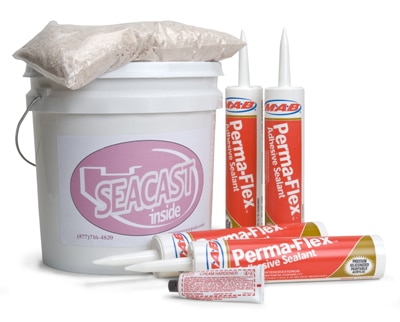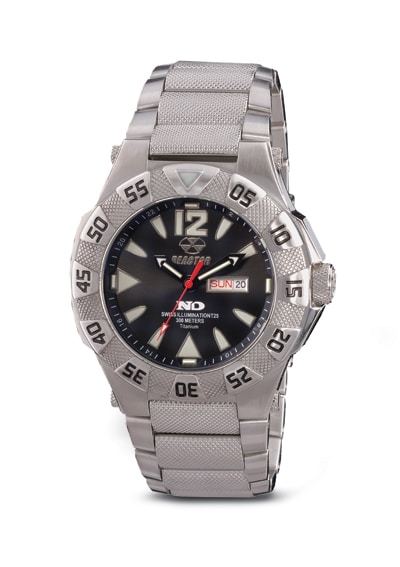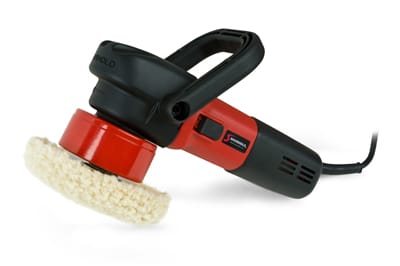We are a tinkering, gear collecting group of enthusiasts, we boaters are. But we don’t want to be duped by hype. That’s one of the reasons I really enjoy testing and reporting on products. And, we can tell by reader feedback that tested gear reports are one of your favorite things to read. Here are a few items we’ve been working with and you’ll get the report here, now, before they can even grace the pages of Boating Magazine.
**

**
**Glastron GT 150 Redux
**I always wanted to restore an old Glastron GT 150—or any other one of the Art Carlson designs that broke such cool new ground when they first appeared in the early 70’s. The GT 150 was used to set a world record ramp jump that was done in a stunt for the James Bond movie Live and Let Die. You remember it. The boat leaped a levee and went flying over the incredulous face of the quintessential “big bellied sheriff” of a Joan Baez song. Ten years ago, I worked at OMC the maker of the outboard on that James Bond boat, as its been nicknamed. Many of the folks involved in that stunt were still employed there. So, I know it really happened. That’s why it appeals to me over the other Carlson Glastron designs.
I finally got my hands on a ’78 model a few years ago and quickly learned my labor of love could often be a task of torture. The boat was mechanically sound and the rotten transom safely reinforced with aluminum plates when I got it but the floor was rotten. So, the deck—some fabricators call it the cap—had to come off and stringers, floor and transom ground out. That work is all done now but when I reassembled the boat, I found some air spaces where the transom panel molded to the splash well on the deck where it met the plywood transom on the hull The combined thickness was strong and durable but the airspace meant trouble. It would be pinched together by the engine bolts and they eventually might pull through the fiberglass. Or the flexing would loosen the engine mounting bolts.

Seacast makes what they describe as a Syntactic blend of non-expanding foam capsules and a two part catalytic compound that when cured is durable and resilient. It’s ideally suited to replacing transoms by boring out the wood, leaving the fiberglass shell behind as a mold and pouring in their proprietary fiber-reinforced compound. The material, they say, cures with the strength required of a transom. I discussed it with the folks at Seacast and decided to drill injection holes in the transom panel and inject it in them until it squeezed out all the other holes. I taped up the transom as if protecting it from overspray and drilled through the tape. Then, I filled empty caulking tubes with Seacast material after mixing it with the hardener and premeasured fiberglass filler. After it began to harden, I peeled off the tape, removing all the excess resin and leaving only a handful of injection holes to grind and paint. The process worked like a charm and the resulting transom appears to withstand the flexing required by the thrust of the motor. I’m looking forward to watching a full transom poured and a boat re-launched with this slick product. Heck, I’m looking forward to launching mine. Or, my daughter is. I promised it to her and at 14—legal boating age in Florida — she’s pretty anxious to get the keys.
You can get more information on this product at transomrepair.com.
**

**
**Ga****mma TI
**A boater is often a participant in many water sports and a guy who likes the “Boatey” look on dry land. What we like about this new soon-to-be-released style from Reactor are features we’ve tested on other watches plus some new features we can’t wait to try. This one promises a solid Titanium case and bracelet that will be rated waterproof to 300 meters. Divers will go for that along with the uni-directional rotating bezel to set a timer for their bottom time. Reactor’s crystals are just that—crystal, not glass and have stood up to my clumsily smacking them against steel and concrete dock pilings as I walked by. This one has 4 layers of anti-glare coating underneath to make it easy to read in harsh light. For night boating, Reactor uses what they call a Never Dark dial technology with compounds that glow brighter and longer between light exposures than most watches. They employ Super-luminova and Tritium tubes which glow without access to light to “charge” them. All Reactor watches are solid on the wrist, substantial and draw comments from people who know me. This one, available in March, will retail for $550.00; reactorwatch.com

**Shurhold Dual Action Polisher
**I had a chance to test this powerful multi-speed polisher when I spiffed the shine of the navy blue gelcoat on my 3-year old center console. Navy Blue is the worst color next to red for hazing and chalking and mine was showing the “sun factor.” I applied Starbrite Premium Marine Polish with PTFE, using the included foam pad on the head and slowed the motor down to one of its lowest settings. After the wax was worked in, I switched to the Velcro wool pad and cranked up the polisher to medium speed. The random-orbiting head kept it from making swirl marks in the gel as it buffed out the wax. After awhile of holding my arms out to keep pressure on the buffer, fatigue set in, so I rotated the “hoop handle” from perpendicular to horizontal. That gave me a different grip on the unit, allowing the sore muscles to rest. I finished off the buff at high speed with a mohair bonnet I got at the auto supply store for a few bucks. It’s been six months since I did it and people are still surprised when I tell them my rig is three years old. $149.95; store.shurhold.com.









